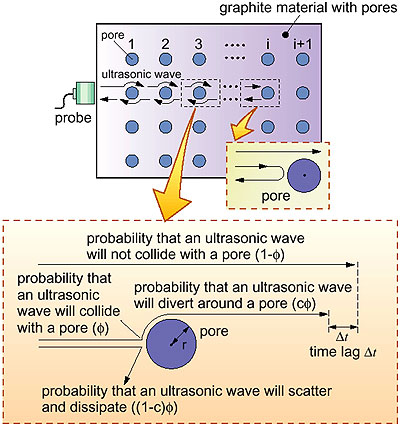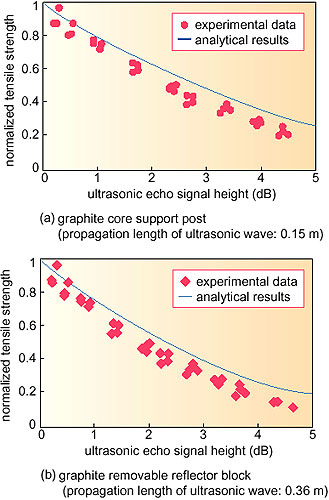| In reactors such as high temperature gas-cooled reactors that use graphite structures, the strength of the graphite structures gradually declines with time due to various causes. In the case of oxidation, the density of graphite in the structures decreases, which decreases the strength of these structures. Development of a nondestructive method to evaluate this situation has been pursued. However, it had been thought that it would be difficult to determine the strength of graphite structures quantitatively by ultrasonic wave propagation properties. When ultrasonic waves penetrate graphite materials with pores, these waves may be diverted around the pores and/or they may be scattered by the pores, as shown in the model of Fig. 2-13. In the case of ultrasonic wave transmission, as the intensity of the transmitted waves is attenuated, the intensity of the reflected waves increases. On the other hand, it is well known that the strength of graphite materials decreases with increases in the size and number of pores. Based on this research, a model that relates to the attenuation of ultrasonic waves in graphite materials including pores and an increase in the height of the reflected wave echoes with the strength of graphite materials has been proposed, as shown in Fig. 2-14. The strength of graphite structures can now be evaluated by measuring the increase or attenuation of reflected waves in the ultrasonic echoes. Figure 2-14(a) shows the correlation between ultrasonic pulse echo height and the normalized tensile strength of a graphite core support post for the HTTR. Thus, as the strength of the graphite decreases, the pulse echo height increases. Figure 2-14(b) indicates a similar phenomenon for a removable reflector graphite block. |


